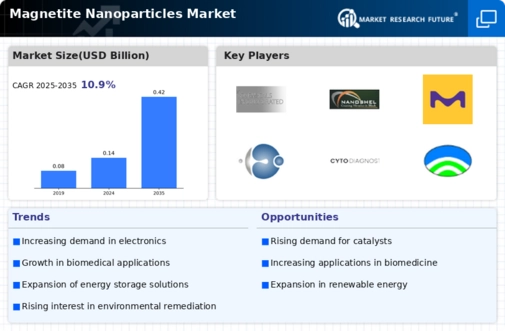Market Share
Magnetite Nanoparticles Market Share Analysis
The Magnetite Nanoparticles Market, which is a vital part of nanotechnology and material science sectors, uses various strategies to place itself within its competitive environment. One of the fundamental approaches includes product differentiation based on advanced features and applications. Players operating in the magnetic nanoparticle industry invest heavily in research and development activities aimed at developing nanoparticles with special attributes such as high magnetization, biocompatibility among others.
Alternatively, cost leadership plays an important role when it comes to Magnetite Nanoparticles market. For instance; there are companies who concentrate on streamlining production procedures besides getting raw materials cheaply while enjoying economies of scale that enable them offer competitively priced nanomaterials. This tends to be very effective approach more especially in industries where nanomaterials selection has been influenced by cost considerations like healthcare and electronics industries. Companies can capture significant market shares within price sensitive markets through offering affordable but quality magnetite nanoparticles thereby becoming price preference suppliers.
Understanding and catering to customer needs which consist of modified specifications, compatibility with different applications and technical assistance is vital for keeping or expanding market share. A company would spend vast amounts of money in research and development so as to come up with magnetite nanoparticle formulas that conform to the changing industry standards and customer requirements. Excellent customer service provision, offering technical support to clients, ensures on time delivery of ordered goods as well as creates strong relationships between business partners encouraging loyalty among customers hence resulting in a positive word-of-mouth publicity leading to market expansion.
Environmental sustainability has become a big issue in the magnetite nanoparticles market; thus companies are using eco-friendly approaches. Customers have gained awareness of the environmental impacts nowadays; therefore, they expect nanomaterials that are sustainable. Green synthesis methods are being researched by some businesses within the magnetite nanoparticles industry whereby non-toxic precursors are used and energy consumption during production is minimized. These firms position themselves in such a way that they appeal to customers who think sustainability must be their priority thereby increasing both their market shares and corporate image positively.

















Leave a Comment